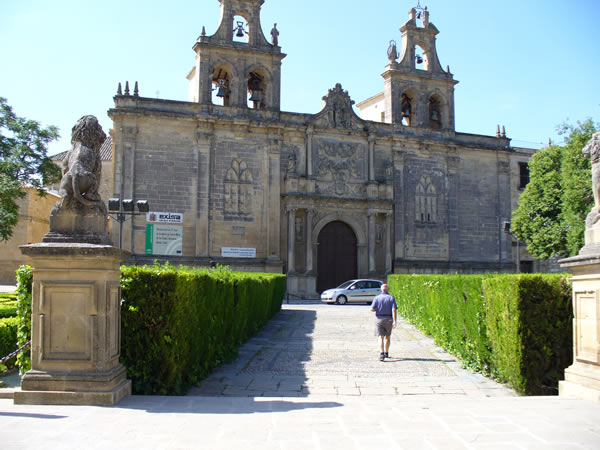This post is also available in:
![]() Deutsch
Deutsch ![]() Italiano
Italiano ![]() Português
Português ![]() Español
Español
The city of Ubeda, which has about 35,000 inhabitants, is located just 10 km from Baeza. Both towns were declared UNESCO World Heritage Sites in 2003. The historical centers of these two cities represent the first surprising example of Renaissance civil architecture and urban planning in Spain in the early 16th century. Ubeda was founded by the Arabs with the name of Madinat Ubbadat Al-Arab (Úbeda de los Árabes). The city was definitively reconquered by King Ferdinand III in 1233.
The definitive development of the city took place only after the fall of the Emirate of Granada. At that time, thanks to some nobles of the city, such as Francisco de los Cobos, who was secretary of Emperor Charles I, and to Juan Vázquez de Molina, who held high positions in the state hierarchy, important construction works were commissioned to the architect Andrés de Vandelvira. This intense construction activity led to the construction of some authentic works of art from the Spanish Renaissance. Ubeda, in its historic center has almost fifty remarkable Renaissance monuments.
WHAT TO SEE: THE MAIN ATTRACTIONS OF UBEDA
THE CENTRAL SQUARE: PLAZA VAZQUEZ DE MOLINA
The Vázquez de Molina plaza is, one of the best Renaissance spaces in Spain. Above all this is the heart of the city. In the monumental square there are many valuable historic buildings. Including the Sacra Capilla del Salvador (1540-1556), designed by Diego de Siloé and built by Andrés de Vandelvira. The Gothic Iglesia de Santa María de los Reales Alcázares built in the 13th century on the site of the mosque. The Palacio de Vázquez de Molina, a work by Andrés de Vandelvira, also known as Palacio de las Cadenas. The Palazzo del Deán Ortega, a Renaissance palace, the work of Andrés de Vandelvira. The Palacio del Marqués de Mancera. L’Antiguo Pósito, a 17th century grain storehouse. The Casa de Juan de Medina, the Cárcel del Obispo and the Palacio Francisco de los Cobos.
A GREAT RICHNESS OF HISTORICAL BUILDINGS
To the right of the Capilla del Salvador begins Calle Baja del Salvador which leads to the Hospital de los Honrados Viejos del Salvador and to a belvedere from which you can admire above all panoramas towards the mountains of Cazorla and Mágina. The Hospital de Santiago was designed by Andrés de Vandelvira in the late 16th century. From the Vázquez de Molina square, you arrive at the Mercado square. This square, which was partially rebuilt in the 19th century, also has some interesting buildings such as the iglesia de San Pablo (15th-16th century), and the Ayuntamiento Viejo.

Other palaces in the city to visit in the immediate vicinity of the Vázquez de Molina plaza are first of all La Casa de las Torres, which is a medieval-looking palace with Renaissance additions with a beautiful Plateresque-style portal. Secondly, the Palacio de los Vela de los Cobos, a Renaissance palace built in the 16th century to a design by Andrés de Vandelvira.
The Palacio del conde de Guadiana, is a Mannerist-style building that now houses a hotel. The Convento de Santa Clara, is one of the oldest monasteries in the city was founded by the Franciscans in the thirteenth century. In the historic center there are also other buildings to visit including the Iglesia de San Pedro, the Iglesia de San Lorenzo, the Convento de San Miguel y Oratorio de San Juan de la Cruz. Finally, the buildings of the Convento de Carmelitas Descalzos. Then the Convento de la Inmaculada Concepción, the Palacio de D. Luis de la Cueva, the Palacio del Marqués de la Rambla and finally the Palacio de los Medinilla are also of interest.
This post is also available in:
![]() Deutsch
Deutsch ![]() Italiano
Italiano ![]() Português
Português ![]() Español
Español
